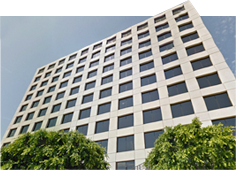“Other Workers” Visa Movement May Mean a Shorter Wait in the EB-3 OW Category
U.S. Immigration Law provides that certain unskilled workers are able to immigrate to the U.S. based on employment. The “other workers” subcategory is for persons performing unskilled labor requiring less than 2 years training or experience, not of a temporary or seasonal nature. Common examples of this employment classification include caregivers, domestic workers and custodians. In order to be petitioned in this category, a labor certification and a permanent, full-time job offer are required.
In recent years, immigration for applicants in this category could take between approximately 7.5 years (Feb 2014 Visa Bulletin) and 2 years (January 2015 Visa Bulletin) from the filing of the Labor Certification. However, the April 2015 Visa Bulletin indicates an October 1, 2014 cut-off date for the “other workers” subcategory. This date signifies the shortest processing time for qualified applicants in this category in recent memory. Please note, individuals in this category born in India or Mainland China are the exception—their processing will still take over a decade—with processing dates hovering around the 2004-2005 mark.
Individuals that have a valid job offer in the “other workers” category, and are considering applying in this category now have a more favorable processing time estimate. Note that beginning the process by filing a labor certification does not grant any legal status. At the end of the estimated priority date wait, a beneficiary already in the U.S. will only be able to adjust status if they are maintaining lawful status or protected under Section 245(i). Meanwhile, beneficiaries located abroad will be able to process their immigrant visa, if otherwise eligible, at the U.S. Embassy or Consulate in their home country.
Like most employment-based Green Card and Immigrant Visa processing, the three steps are: 1) Labor Certification by the U.S. Department of Labor; 2) Approval of an Immigrant Visa Petition; and 3) Applying for a Green Card (if eligible and in the U.S.) or an Immigrant Visa (if abroad).
Labor Certification is mandated as the first step in most employment-based immigration for the purpose of protecting the U.S. labor market. Since March 28, 2005, labor certification applications are submitted to the U.S. Department of Labor (DOL) using its Program Electronic Management Review System (PERM). The PERM process is required for employment-based second (EB-2) and third (EB-3) cases, including the “other workers” category.
The labor certification process entails a test of the local labor market for availability of qualified and available U.S. workers. Recruitment efforts for the position must entail advertising the position at the level of or above the prevailing wage. Employer attestations are submitted with to the DOL to indicate compliance with recruitment and other PERM requirements. Employers must create and maintain a PERM audit file with evidence of proper recruitment efforts and supporting documentation. The DOL may audit the employer to verify compliance.
Following approval of the Labor Certification, the employment-based immigrant visa petition is filed. The filing must include comprehensive proof of the employee’s qualifications for the applicable classification and with proof that the employer can pay the prevailing wage since the priority date. Once the petition is approved, it is time to wait for the category to be current. Once the wait is over and the “other workers” category is current for processing, applicants in the U.S. lawfully or protected under Section 245(i) can submit Adjustment of Status applications. If the applicant is abroad, consular processing of the immigrant visa may be possible. It is relevant to note that priority date movement changes month-to-month, and the actual wait in line for visa issuance may be sooner or take longer than the current Visa Bulletin estimates.
Before embarking on this multi-year process, which will have long-lasting effects on the company and worker, it is critical that the proffered position, employer, and beneficiary are carefully evaluated for eligibility.






